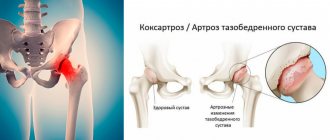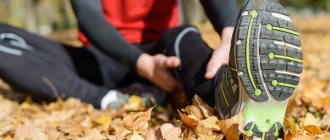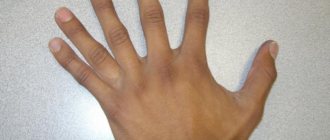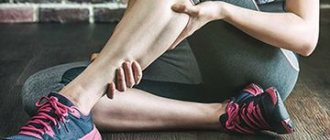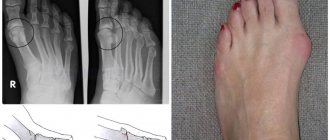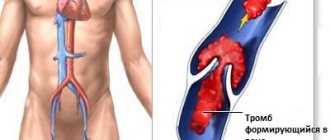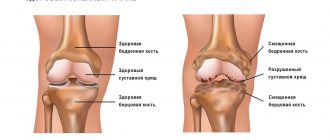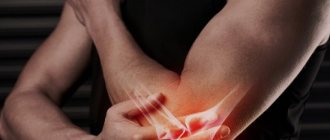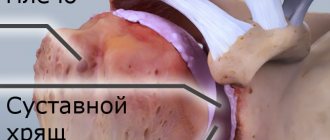The structure of human hands distinguishes him from representatives of other biological species. Thanks to them, we can not only serve ourselves, but also perform a wide variety of work. The fingers of the human hand are parts of the upper limbs, which in the process of development received a very important functional load. That's why, when your fingers hurt, it becomes difficult to hold a fork or spoon, type text on a PC, cook food, or even just lace up your shoes.
The reasons why your fingers hurt can be different. In addition to being susceptible to injury, there are a number of medical conditions that can affect their mobility. In addition, pain in the joints of the fingers can be caused by inflammatory processes (arthritis).
At CELT you can get advice from a specialist algologist.
Make an appointment
What causes pain in the finger joint when bending?
Pain in the fingers can occur for various reasons.
The most obvious of these are injuries. In addition, a number of pathologies can lead to discomfort: inflammatory processes, autoimmune diseases, hormonal imbalance and many other disorders. The most common causes of pain: 1. Rheumatoid arthritis is a chronic autoimmune pathology in which small and subsequently large articular joints suffer. In case of this violation:
- the joints of the index and middle fingers on the hand hurt;
- the skin of the fingers turns red and swells;
- at night and in the morning there is a feeling of stiffness in the hands;
- joints are often affected symmetrically.
2. Psoriatic arthritis – joint inflammation associated with psoriasis. Characteristic:
- pain in the area of the distal (nail) digital phalanx;
- severe swelling;
- redness of the skin with slight cyanosis;
- difficulty when trying to straighten bent thumbs or hands.
3. Infectious arthritis - inflammation of the joints due to the penetration of pathogenic microorganisms into them. Signs:
- acute pain (short-term or long-term - up to several days);
- fever (usually local, sometimes general), chills.
4. Gouty arthritis (gout) is a joint pathology that develops as a result of too much uric acid compounds in the body. Peculiarities:
- burning pain in fingers;
- redness up to cyanosis, swelling;
- motor dysfunction;
- sudden onset of an attack (often at night).
5. Ostearthrosis is a non-inflammatory disease accompanied by the destruction of intra-articular cartilage. Appears as:
- pain in the joints of the hand;
- finger deformations: thickening, formation of subcutaneous nodules, swelling.
6. Rhysarthrosis is a pathology in which the thumb joint hurts as a result of overload, as well as a previous infection or injury. Signs:
- increased pain at the slightest load (later and at rest);
- deformation of the articular joint;
- lack of mobility.
7. Stenosing ligamentitis - damage to the tendons and ligaments of the fingers. Signs:
- a characteristic click when bending a finger;
- “jamming” of the clenched palm;
- pain when moving the hand.
8. Carpal tunnel syndrome is a consequence of injury or pinching of the median nerve passing through the wrist. Usually develops with prolonged and constant work at the computer. The most common joint that hurts is the index finger; there may also be pain in the other fingers except the little finger. Other signs:
- decreased sensitivity, numbness of fingers;
- deterioration of hand mobility;
- pale skin on the hands.
9. Rheumatism is a systemic disease that affects connective tissue. Usually develops as a result of infectious diseases. If the joints of the fingers are swollen and painful after a sore throat, this may be a symptom of rheumatic disease. You may also experience:
- redness of the skin, rash;
- elevated temperature;
- decreased hand mobility.
Factors predisposing to damage to the finger joints:
- problems with the immune system;
- changes in hormonal levels;
- metabolic disorders;
- hereditary tendency to joint pathologies;
- chronic infections;
- injuries, frequent microtraumas;
- prolonged exposure to harmful environments: very cold or hot water, chemicals, etc.
Treatment for inflammation of the joints of the fingers should only be prescribed by a doctor: a therapist, an orthopedic traumatologist, a neurologist or a rheumatologist. Attempts at self-medication can lead to further deterioration of the condition: deformation of the fingers and decreased mobility.
Diagnostics
Orthopedic traumatologists are involved in identifying the causes of pain in the fingers. The diagnosis is made based on a conversation with the patient, external examination data, and additional studies. The diagnostic program includes:
- Survey
. The doctor finds out when and under what circumstances the pain syndrome and other symptoms first appeared, determines the dynamics of the development of the disease, the factors that provoke improvement or deterioration of the patient’s condition. Study life history, family history. - Physical examination
. The specialist evaluates the appearance of the fingers, identifies deformations, inflammation, cracks, dry skin, temperature and color disturbances, swelling, and other manifestations of pathology. Examines sensitivity, range of motion, pulsation in peripheral arteries. - Radiography.
It is performed in two projections, covering the affected fingers or the entire hand. Confirms the presence of fractures, dislocations, tumors, inflammatory and degenerative processes, areas of destruction of solid structures in deep forms of panaritium. - Electrophysiological studies.
Performed for pain of neurological origin to clarify the level of nerve damage, assess the condition of the muscles, and nerve conduction. - Lab tests
. They are produced to determine inflammation, assess the general condition of the body, and detect specific markers for collagenosis.
According to indications, patients are referred for consultation to an endocrinologist, neurologist, vascular surgeon, and other specialists. They prescribe MRI and other instrumental techniques. A biopsy of hard and soft structures is performed for cytological or histological examination.
Clarification of complaints and examination of fingers is the first stage of diagnosis
How to treat when the joints on your fingers hurt?
Therapy for this ailment helps eliminate both the unpleasant sensations themselves and the causes of their occurrence. Thus, for inflammatory processes, non-steroidal or hormonal anti-inflammatory drugs are prescribed, as well as antibiotics in case of infection. In case of dystrophic damage, the task of treatment is to restore cartilage tissue with the help of chondroprotectors, physiotherapy and massage. Performing special exercises also helps restore finger mobility.
The most effective way to restore the functionality of small joints is physical therapy: magnetic resonance therapy, electrophoresis with novocaine, electrosleep and some other procedures. During the period of remission, sanatorium-resort treatment using hydrogen sulfide and radon sources is recommended. Therapeutic nutrition for joint pathologies:
- seafood and fish - contain calcium, iron and phosphorus;
- apple cider vinegar – helps rid the body of toxins;
- flaxseed oil, fish oil - contain fatty acids, help restore fat metabolism.
In addition, it is advisable to include lettuce, radishes, nuts, currants, pomegranate, figs, and ginger in your diet. Limit your consumption of fatty dairy products, mayonnaise, sweets, baked goods, spicy foods and smoked foods.
Causes
Arthrosis can be primary and secondary.
Primary arthrosis appears due to problems with the cartilage tissue of the joint, namely:
- genetic disorders in the composition of joint cartilage tissue;
- joint hypermobility;
- dysplasia, flat feet, wide feet.
Secondary arthrosis is the result of joint damage and other diseases. Among its reasons:
- injuries, microtraumatization of joints;
- acute and chronic arthritis, synovitis;
- metabolic disorders, lack of calcium, phosphorus and other minerals;
- gout, psoriasis, rheumatoid arthritis;
- diabetes mellitus and other diseases of the endocrine system.
Prevention of joint diseases
The following recommendations will help protect yourself from joint diseases:
- try not to overcool your hands;
- stop smoking and consuming large amounts of alcohol;
- eat more fresh fruits and vegetables and as little canned and spicy foods as possible;
- If you have an acute respiratory viral infection, be sure to get treatment, do not try to endure the disease “on your feet”;
- watch your weight;
- Don't snap your fingers.
So that you don’t have to ask the question: “How to treat if your thumbs hurt?”, periodically perform a simple exercise to prevent carpal tunnel syndrome, especially if your activity involves a lot of work on a PC: raise your thumbs and clench the rest into a fist (gesture of approval). Rotate your thumbs clockwise and counterclockwise. Specialists from the “Hello!” network of clinics will help you determine the exact cause of the discomfort. Are you trying to figure out what to do if the joint on your finger hurts or is swollen? Make an appointment with us - experienced doctors will perform an examination using the latest diagnostic equipment and prescribe the most effective course of treatment using modern non-drug methods.
What to do if the first signs of arthrosis appear
If “nodules” appear on your fingers, it means that the disease has been developing for several years. It would be good if it could be detected much earlier, at the stage of the first aching pain. Do not ignore pain, which worsens at night, and slight swelling, even if they do not limit movement in the joint.
In the initial stages of arthrosis, it is recommended to take protective drugs - chondroprotectors. Chondroitin and glucosamine in their composition improve the regeneration of cartilage cells, increase the content of hyaluronic acid, and make cartilage more durable and elastic. These drugs are effective only in the early stages, despite the fact that they are also prescribed subsequently in complex therapy.
Paraffin therapy helps improve blood flow and speed up metabolism. Cosmetic paraffin heats problem areas. If you already feel discomfort in your hand, provide it with sufficient physical activity. If left unused, cartilage will deteriorate faster. For this purpose, you can squeeze and unclench a rubber ball or expander, or sculpt it from clay or plasticine.
Half an hour of sculpting a day will easily strengthen your hand muscles!
Treatment
Pain in the hand is a symptom, not a separate disease, so treatment is not limited to the use of painkillers and ointments. These methods only temporarily reduce pain, but do not get rid of their cause. As a result, the disease progresses, leading to loss of mobility and joint deformation. Dr. Bubnovsky’s centers help relieve pain and restore joint mobility.
The basis for the treatment of pain in the hands is the unique method of Professor Bubnovsky - modern kinesitherapy. Such treatment not only eliminates discomfort, but also normalizes blood circulation, relieves inflammation and restores affected functions.
Exercises using the Bubnovsky method are simple, accessible and have virtually no contraindications. Thanks to gymnastics, blood flow in the tissues of the joint improves, its mobility increases, and stiffness and tension in the hand go away.
The treatment program is prescribed by a kinesiotherapist after examining the patient and a series of myofascial tests. In this case, not only the state of hand function is assessed, but also the general condition of the musculoskeletal system. This approach makes it possible to prescribe personalized and most effective treatment. Classes are conducted under the guidance of an instructor. He controls the technique of movement and breathing, monitors the body’s reaction.
Exercises are performed in a certain sequence using various exercise equipment and devices. For narrow-local exercises, a decompression wrist simulator is used. Exercises on it strengthen your fingers, help eliminate excess tension in the hand and restore tissue nutrition. As a result of stretching the hand, the pain goes away.
The treatment is complemented by exercises on the Bubnovsky multifunctional simulator (MTB) and rehabilitation simulators. Exercises on them increase blood circulation in the muscles of the arm, strengthen the joints, and restore their mobility. Strength loads can be supplemented with massage, cryotherapy, electrophoresis and magnetotherapy.
Such an integrated approach affects the root cause of the disease and has a beneficial effect on the entire body as a whole.
